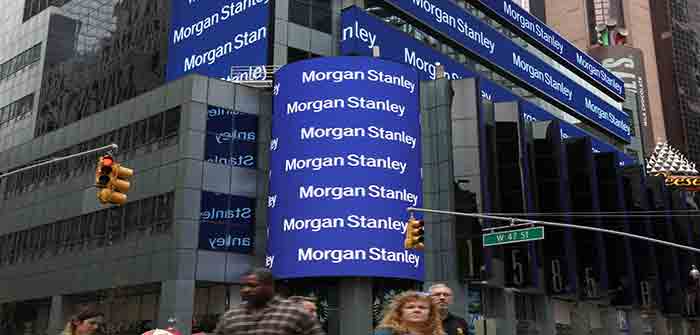
by Tyler Durden at ZeroHedge
In the latest Morgan Stanley Sunday Start note published over the weekend, which this time featured the bank’s chief US equity strategist, Michael Wilson (who after BofA’s Michael Hartnett, is easily the street’s second most bearish strategist), the bank’s strategist elevated his bearish view up another notch, writing that this bear market will not be over until one of two things happens: “either valuations fall to levels (14-15x) that discount the kind of earnings cuts we envision, or earnings estimates get cut.”
Writing after the torrid Friday bear-market dead-cat bounce, it is no surprise that Wilson said that “with valuations now more attractive, equity markets so oversold and rates potentially stabilizing below 3%, stocks appear to have begun another material bear market rally.” However, returning to his favorite bearish place, he adds that “after that, we remain confident that lower prices are still ahead.”
How much lower? Wilson’s answer: “in S&P 500 terms, we think that level is close to 3,400, which is where both valuation and technical support lie.”
We’ll get to how Hartnett gets to that number soon, but first a quick summary on why Hartnett thinks that it’s all about growth from this point, published earlier today in his latest Mid-Year Outlook note titled “More of the Same.”
Picking up where he left off yesterday, which for those who missed it was to explain that the rates market fully reflects the “fire” part of Wilson’s narrative (adding that rates could have even overshot to the upside by incorporating more hikes than the Fed may be able to deliver in this cycle, based on the significant damage to financial asset prices and the approaching slowdown that looks much worse than just a few months ago), the strategist writes that with the ‘Fire’ portion of our narrative (higher inflation and tighter Fed policy) now more reflected in asset prices, he expects interest rates to stabilize from here: “In other words, we think the bond market has now done enough of the Fed’s work to slow the economy. Therefore, the key question for equity investors at this point is how much will the economy slow and how much are earnings over-stated.”
Wilson’s own view is that multiples generally fall ahead of the bulk of earnings cuts so part of the de-rating this year has been about the market anticipating these earnings cuts as much as higher rates. However, given the very modest equity risk premium (300bps) currently embedded in the P/E, Wilson doesn’t think much of an earnings cut has been discounted yet:…
Continue Reading
